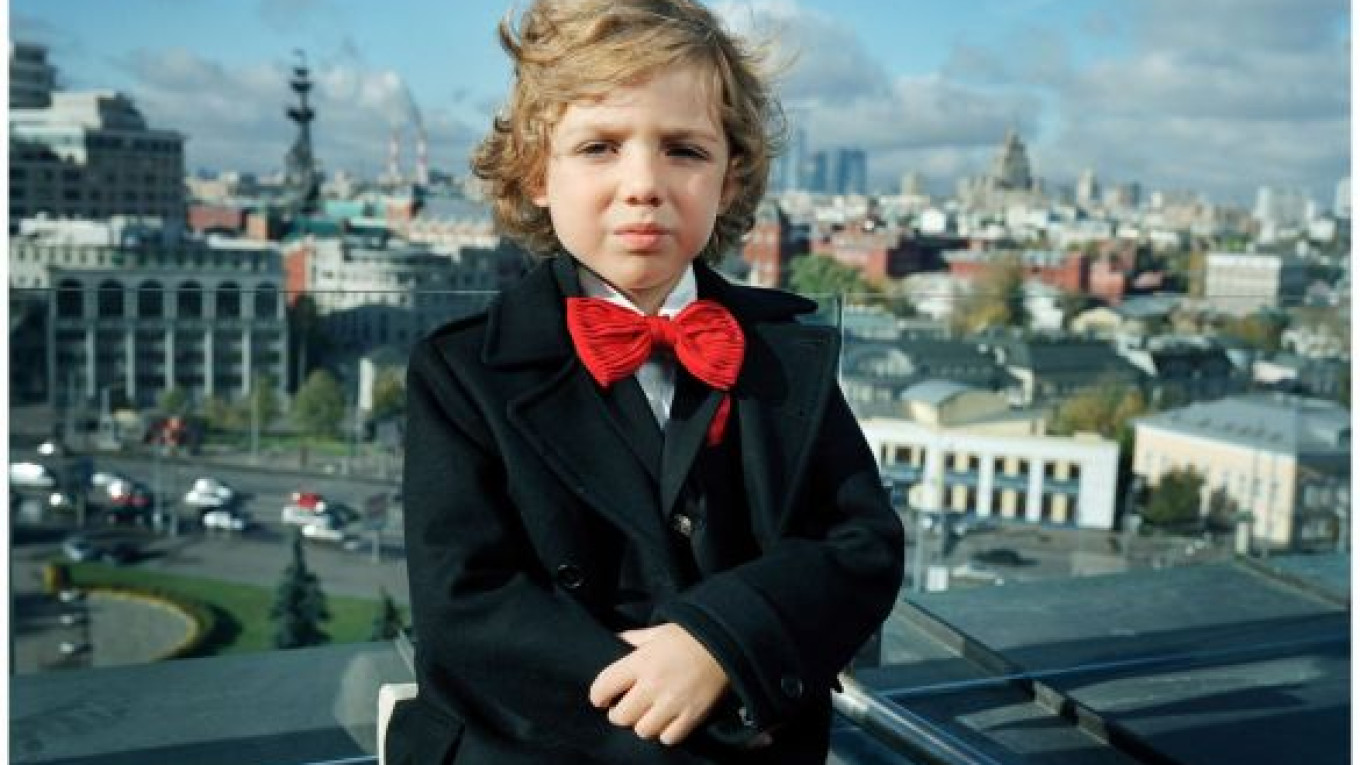Anna Skladmann's exhibition "Little Adults" gives viewers a rare glimpse into the closely guarded world of the children of Russia's newly rich elite, the first generation of heirs and heiresses who were born into the wealth amassed by their parents in post-Soviet Russia.
The photos focus on children between the ages of 6 and 12 and their position in the world as "Little Adults," Skladmann said in an interview.
Yakov is depicted wearing a suit jacket and holding a Kalashnikov, while ballerinas dance on the golden-framed TV behind him. Arina wears long leather gloves and leans against a vintage car from her father's collection. Alisia sits cross-legged under a chandelier wearing a tiara and a mink coat in her mother's fur shop.
Skladmann said she wants the project to be seen as a historical document, with the surnameless children serving to represent a whole generation of what she calls "child-successors."
"Maybe in 50 years time we will pick up these photographs and understand how that society started forming itself," Skladmann said. "What is happening now is a social phenomenon that has been absent in Russia since the time of the tsars. At that time they had these great court painters, who I've studied nonstop. In my photographs, I wanted to capture the reality but also portray it stylistically as the new court painter."
In one portrait, Antoshka wears a Hussar's uniform. He stands solemnly with his arms by his sides.
At the private opening of the exhibit, Antoshka, wearing a cap and baggy jeans, came up to Skladmann and asked whether she could reshoot his photograph. "I want to add more of a hip-hop vibe," he said.
"Court painters would decide on the location and outfits for their subjects and make them pose for hours on end. My methods aren't that extreme, but nothing in these photographs is an accident. We were building a stage together, around a character," Skladmann said.
Not all of Skladmann's subjects were happy with the stage she built for them.
In comments accompanying the portraits, Skladmann describes how Liza, sitting on the end of an absurdly long dining table in a pristine white dress, spent the entire shoot itching to get changed and back to her favorite pastime — skateboarding along the smooth white corridors of her family home.
Vadim, wearing a large red bow tie and standing on the rooftop terrace of his family home with Moscow laid out behind him, asked Skladmann how many photographs she planned on taking. When she promised no more than 10, Vadim counted down until the 10th click before retreating inside to put on his pajamas and watch TV. Skladmann had meant 10 films, not 10 shots.
Other children, however, were more resigned to life in the spotlight. Meara, photographed in the synagogue he attends, received a call from his grandmother after the shoot.
She asked Meara how it had gone, and Skladmann wrote that he answered with the world weariness of an elderly Jew. "Well, it was nothing out of the ordinary — just a simple photo shoot."
The exhibition at the Moscow Museum of Modern Art is the first large-scale showing of Skladmann's project in Russia, having already received good receptions in the United States and Europe.
"The exhibition in Moscow will take the project to another level. It's easier when I show it in Europe or America because I'm showing them another world. Here it's more complicated because I'm forcing people to look in a mirror at their own society. I'm nervous about how people will react," Skladmann said.
Born in Germany to Russian parents in 1986, Skladmann first came to Russia as a young teenager in 2000 when she attended a masquerade ball.
"They had a special children's table and because it was a ball they were all dressed up, but not in the way that I knew it, say for Halloween or for a carnival. They were all dressed up like little adults, and they were behaving like them too," she said.
This impression stuck firmly in Skladmann's mind. When she returned to Moscow in 2008 she met a young girl named Nastya at a tea party, who would help get her into the homes and lives of other members of Russia's elite.
Once word was out about Skladmann's project, families began to get in touch with her to ask if their children could be included.
"Little Adults" runs till April 22. Moscow Museum of Modern Art. 10 Gogolevsky Bulvar. Metro Kropotkinskaya. Tel. 231-4405.


